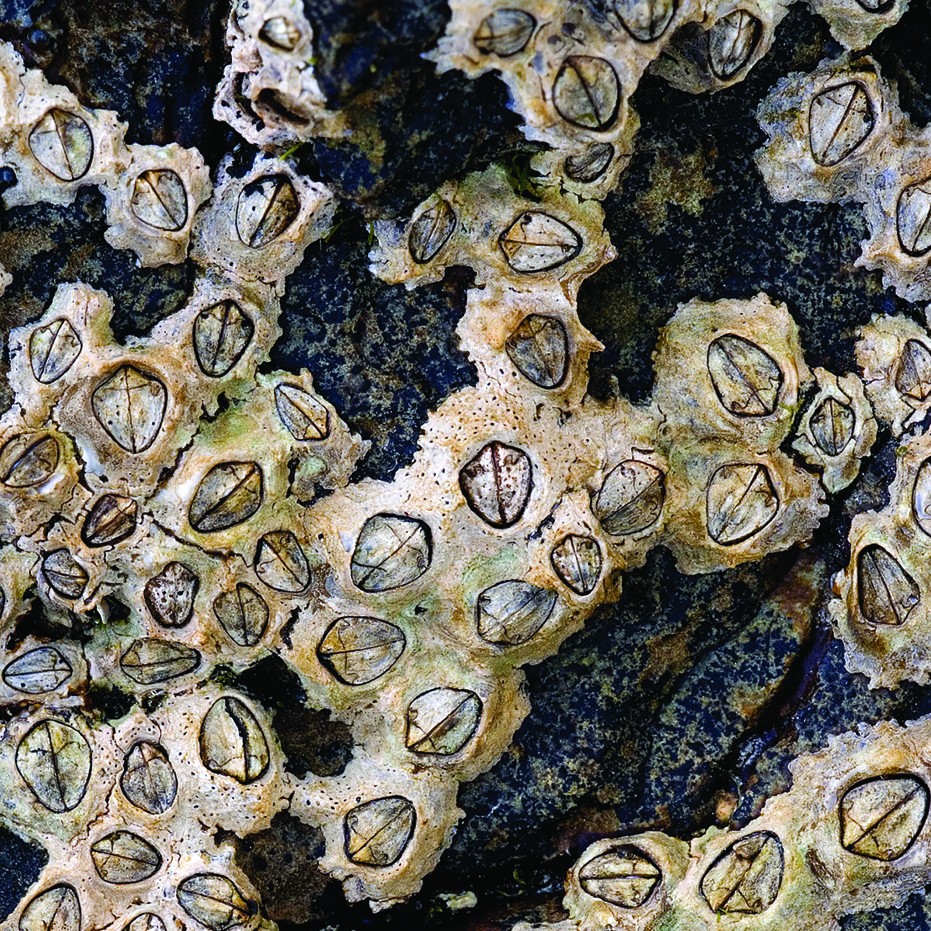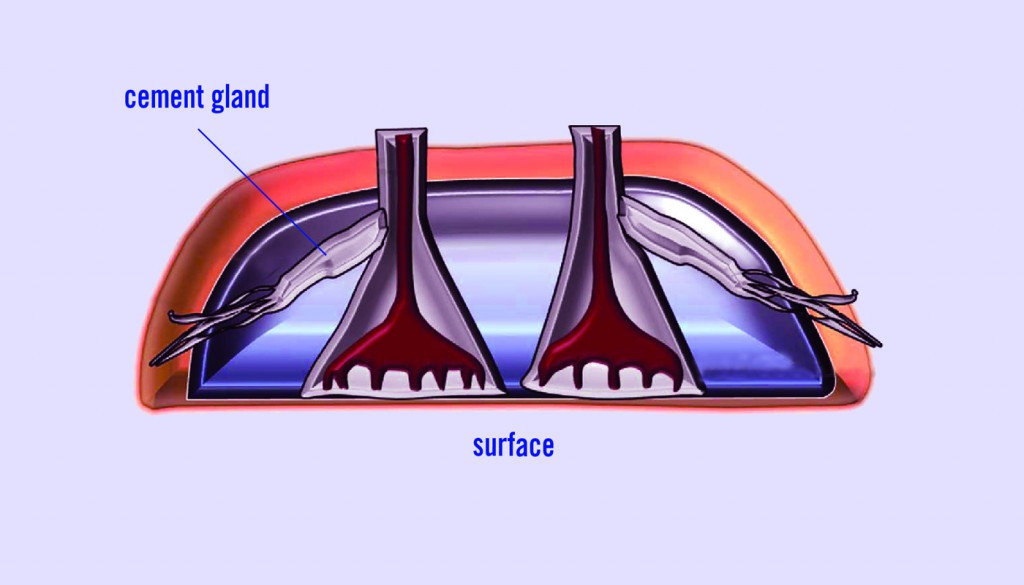No harm, no foul

Chthamalus stellatus by Michael Maggs. Image courtesy of Wikimedia Commons.
How to stop barnacles from gaining a foothold on hulls and gear.
It’s a problem that has plagued sea-goers since the dawn of maritime history—the accumulation of barnacles, algae, and other unwanted sea growth on their boat hulls.
Even today, despite a world of technological know-how in keeping the stuff off, mariners are still dogged by the scourge of biofouling, the collective name given to the phenomenon of boats bogged down by tenacious, tag-along sea life. Fighting the problem annually costs commercial and military maritime operations billions spent on time-eating maintenance, temporary remedies—usually in the form of applying some type of toxic bottom paint—plus the extra fuel required to run fouled fleets.
Researchers in the lab of biologist Andrew Mount say they have come up with an entirely novel approach to solving the age-old problem. Last spring, Mount’s team applied for a patent on a technique that some day could revolutionize the global war on biofouling.
Steeped in research on his favorite marine organism—the oyster—in 2002 Mount ran across a paper published in 1986 by a couple of biologists working in oyster aquaculture who described a curious phenomenon. They had discovered that if free-swimming oyster larvae are given a dose of noradrenaline, a natural hormone that regulates heartbeats in mammals, they won’t settle on each other. Instead, they settle out individually, where they grow up as single oysters instead of clumps of oysters fused together.
Intrigued, Mount began his own experiments that eventually caught the attention of one of his top grad students, Neeraj Gohad, who was looking for a good topic for a Ph.D. thesis. Gohad soon showed just how powerful the hormone could be in altering the oyster larvae’s settling behavior. In 2005, his results persuaded the U.S. Office of Naval Research—an agency forever interested in fighting barnacles—to fund Gohad’s research.
In the decade since, Gohad has used the Navy funding to refine his technique and to figure out how it works. The best news is that he’s found that the technique also works against barnacles, tunicates, tube worms, bryozoans, and assorted other biofouling pests. The animals loathe noradrenaline and won’t settle on anything touched by the stuff.
What all these biofoulers have in common, Gohad found, are special sensors embedded in their “feet,” which their larval forms use to search for suitable spots to settle. These sensors are extremely sensitive to noradrenaline, which testing has shown to be otherwise completely nontoxic to marine life.
A paint with promise
The patent that Gohad and Mount have applied for describes the invention of a completely new type of polymer-based bottom paint that contains just enough noradrenaline in a stable form to make the product an effective deterrent for biofouling organisms. The researchers have partnered with some private companies to develop and test various prototypes of the new compound and so far the results look promising. Much engineering remains to solve the usual scale-up problems that typically arise with any new technology, but Gohad and Mount are confident they’re on the right track.
“Every marine organism we’ve tested is deterred from settling wherever these compounds are applied,” Gohad says. “The organisms simply lose the ability to attach to the surface.”
The technology also holds a decidedly “green” promise as well. Traditional bottom paints, even though highly evolved from yesteryear, still rely heavily on copper and other heavy metals as their active ingredients for repelling sea pests. Such paints wear off and otherwise leach their toxins into seawater and are thus identified as a serious source of marine pollution around the world.
“These noradrenaline compounds don’t kill things,” Mount says. “We see this as being particularly useful in the aquaculture industry, where fouled cages in oyster production, for example, are a major problem.”
 In the July 11 issue of Nature Communications, Nareej Gohad from Mount’s lab proposed a new model for how barnacles attach themselves. This simplified portion of their illustration shows the barnacle’s “foot” in section, with cement glands that release first a lipid and then a protein. The lipid may chase water from the surface, allowing the protein cement to do its job. The researchers have found that paint treated with noradrenaline can prevent the attachment.
In the July 11 issue of Nature Communications, Nareej Gohad from Mount’s lab proposed a new model for how barnacles attach themselves. This simplified portion of their illustration shows the barnacle’s “foot” in section, with cement glands that release first a lipid and then a protein. The lipid may chase water from the surface, allowing the protein cement to do its job. The researchers have found that paint treated with noradrenaline can prevent the attachment.

